

 The South African
The South African
Port Elizabeth has arguably the most complete collection of surviving coast artillery buildings and equipment dating from the Second World War (1939-45) of any port in South Africa. But completeness is not their only claim to distinction. Prior to 1939, the harbour of Port Elizabeth had no defences excepting, of course, Fort Frederick, the square stone fort on the hill above the mouth of the Baakens River. This was built in 1799 to 1800 to guard the original landing place, before the arrival of the 1820 British Settlers and the development of the town.
A fortnight before South Africa declared war on Nazi Germany on 6 September 1939, No 3 Heavy Battery, South African Artillery, at East London was divided into Right Section, which remained there, and Left Section, which comprised sixteen other ranks under Captain C E G Brereton-Styles. This section was despatched to Port Elizabeth with two 6-inch (152 mm) Mark XIX field guns, and was later renamed No 6 Heavy Battery.
An 18-pounder quick firing (QF) pedestal gun mounted on a steel-plated truck of First World War vintage, which was brought to Port Elizabeth by Lieutenant Robert Meintjies, who joined the battery to assist Brereton-Stiles (C E G Brereton-Stiles, 1992-3), was added to the armament on the Charl Malan Quay at the harbour for protection against motor torpedo boats. (Brereton-Styles may have been only a lieutenant when he was transferred to Port Elizabeth, as a letter of 9 November 1939 from Commanding Officer, Coast Artillery Brigade [CAB] to Director General Operations [DGO], Pretoria, mentions a 'Lieut Stiles' in connection with the mounting of guns at the harbour. According to C J Nothling (1987: pp 353, 355), he was CO of 8 Heavy Battery at Saldanha Bay by 1946.) By the end of 1939, two searchlights had also been installed on Charl Malan Quay (Nothling, 1987, p 353).
Work started immediately on the levelling of sand dunes at the site chosen by Brereton-Styles, at Humewood, south-east of the harbour. This was to provide temporary emplacements for the two 6-inch Mark XIX guns, which were operated from wooden platforms dug into the ground. Ammunition magazines and keeps were also dug in and reinforced with railway sleepers and sandbags.
This temporary battery was nicknamed 'Fort Gocom' because sour figs (gocoms) were planted to stabilise the sand (Brereton-Stiles, 1992-3). However, by early November 1939 (Letter, 9/11/39, OC CAB, Cape Town, to DGO, Pretoria), work had started on the setting out of the permanent emplacements for the new Algoa Battery. These, together with the magazines and living quarters, were completed by April 1940 (Nothling, 1987, p 353). A month later, the two 6-inch Mark XIX field guns of Gocom Battery were superseded by two 6-inch QF guns from Simon's Town. These were mounted in the new concrete emplacements of Algoa Battery. German intelligence was so good that a wireless broadcast from Zeesen announced the removal of the guns before they had left Simon's Town (Nothling, 1987, p 349).
In January 1940, a recommendation was made for the immediate construction of a combined Battery Observation Post and Director Station (BOP&DS) for No 6 Heavy Battery (Letter, 19/1/40, DGO to DDF and OC CAB [for information]). This refers to the surviving night BOP at Algoa Battery. The following August, correspondence on the Humewood BOP (the day BOP) and wireless station mentions that the roofs were to be parapeted and loopholed and that a rifleman's post was to be constructed of sleepers near the foot of the navigation beacon overlooking the engine room of the wireless station. The whole site was to be enclosed within a wire entanglement. At this site there were to be provided also a latrine and washing accommodation, with a separate, small room for the use of the garrison (Letter 14/8/40, DDF, Cape Town, to Garrison Engineer, Port Elizabeth). These structures were all on Humewood Hill - now named Brookes Hill - and have survived. The exception is the engine room which was demolished a few years ago.
In addition to these facilities, advance warning of the approach of shipping and aircraft to the harbour was given by three fortress observation posts (FOPs) which were built at Amsterdam Hoek, Seahill - on the Cape Recife peninsula - and Skoenmakerskop, together with a Port War Signal Station next to Cape Recife lighthouse. The FOPs were planned towards the end of 1939 and were built during 1940 (Letter 9/11/39, OC, CAB, Cape Town, to DGO, Pretoria; Survey Instruction No 1/1940 28/2/40 from Director, Trigsurvey Office, Mowbray, to Surveyor Mr F Mendes-de Gouvea, Mowbray; and Letter 14/8/40 from DDE, Cape Town, to Garrison Engineer, Port Elizabeth). Each is double-storeyed with a flat roof reached by a steel ladder, with loopholed free-form parapets rising above the roof, and each was protected by a barbed wire fence or entanglement.
The FOPs at Amsterdam Hoek and Skoenmakerskop (see plate 1) were both approached by a long flight of concrete steps - 85 at the former and 70 at the latter. Each has a concrete 'slide' down one side, presumably to assist with the hauling up of equipment or provisions. Both slides have grooves at prominent points which appear to have been formed by ropes or hawsers.
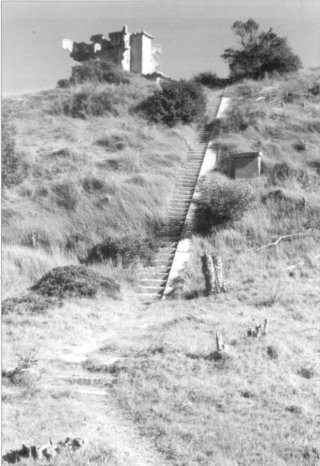
Plate 1: Fortress Observation Post at Schoenmakerskop.
Note the flight of access steps with the slide on the right.
(Photo: R Tomlinson)
The port war signal station was recommended as 'urgently necessary' in a letter of 19 June 1940 'as the one on No 1 quay at Port Elizabeth is not able to command all directions of approach to the port.' (Letter 19/6/40, Secretary for Defence to General Manager, S A Railways & Harbours, Johannesburg). Three pre-existing garages were rebuilt on the ground floor of the new structure. The work was probably completed in the second half of 1940 and they are still in use by the light-house division of the National Ports Authority of South Africa.
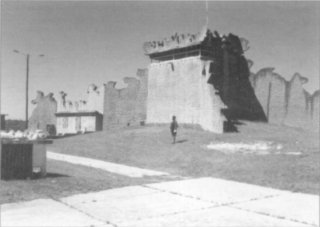
Plate 2: Night Battery Observation Post and
Director Station and the Instrument Workshop
at Algoa Bay (Photo: R Tomlinson)
To return to Algoa Battery, the two 6-inch QF guns installed in 1940 were replaced in April 1942 by two 6 inch, breech loading (BL), Mark V guns enclosed within steel shields. These two guns are still in position, although they have lost their breech blocks and the breeches have been welded closed. The barrels are dated 1900 and 1902 respectively on the breeches. In April 1944 a 6-inch, BL Mark VI gun was mounted and tested in a third rear emplacement, but was later removed, (Nothling, 1987, p 353, The Defence of Bases Committee, formerly the British Ports Defence Committee, decided that the 9,2-inch (234mm) and 6-inch (152mm) coastal batteries should have no fewer than three guns 'for effective observation of fall of shot in adjusting the mean point of impact, on which the engagement of targets depended.') Docks Battery was armed with a 6-pounder QF Mark I (twin) gun installed in June 1943, and four naval 12-pounder QFD guns. These have all gone. Radar was introduced in 1942 (Nothling, 1987, p 353).
Towards the end of the war, mos of the coastal artillery batteries in South Africa were placed in 'care and maintenance" as the threat of enemy action had decreased sufficiently to allow this. Early in 1946, they were revived and renumbered, No 6 Heavy Battery comprising Algoa and Docks batteries amalgamated with No 3 Heavy Battery at East London to form 3/6 Heavy Battery with Headquarters at Port Elizabeth (Nothling, 1987, pp 353,355).
When the Humewood Development Scheme was mooted early in 198, the Coast Artillery Brigade stated that the guns of Algoa Battery would not be materially affected. But the coast artillery searchlights would be affected by the erection of the aquarium and sea pond. It was requested that there be an investigation of alternative sites for the searchlights (Letter 15/3/48, OC CAB, Cape Town to OC, Eastern Province and Border Command, and OC, 3/6 Heavy Battery SAA, Port Elizabeth). It is possible that the two searchlights positioned close to the seashore below Algoa Battery, the bases of which still survive, were placed there at this time.
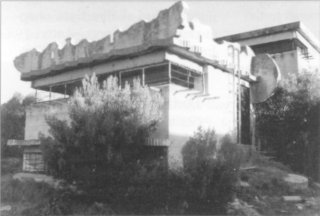
Plate 3: Day BOP at Brooke's Hill with the Artillery
Radar Building behind (Photo: R Tomlinson)
Various administrative changes occurred over the next few years. In January 1949 the docks batteries of all the ports were renamed to overcome the confusion which previously existed. Port Elizabeth's became the Malan Battery. It was decided to accord regimental status to all heavy batteries in September of the same year, and the East London and Prirt Elizabeth unit became No 3/6 Coast Regiment South African Artillery. When the S A Corps of Marines (SACM) was founded in July 1951, all coast regiments were transferred from the SAA to the SACM (Nothling, 1987, p 355). The map on the wall in the upper, rear room of the the large double-storey artillery radar building on Brookes Hill must date from this time. Sadly, it was vandalised some years ago.
But the axe was about to fall; the fitting of guided missiles to Russian warships made fixed artillery defences obsolete. No 6 Coast Regiment SACM held its last parade on 22 Septebmer 1955, when Algoa Battery was officially handed over to the SA Navy in the presence of Commodore H H Biermann, Navy Chief of Staff; Majur J H Wicht, Officer Commanding No 6 Coast Regiment; and Louis Dubb, Mayor of Port Elizabeth. It was to be looked after by a maintenance staff og eight men ( Eastern Province Herald, 23/9/55). SACM was disbanded nine days later. Britain abandoned coastal artillery at the end of 1956 and, at the beginning of 1950, the SA Navy's Active Citizen Force coastal artillery and radar units were abolished (Nothling, 1987, p 355),
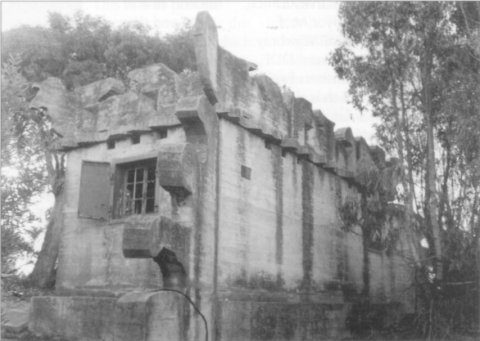
Plate 4: Wireless Station Brooke's Hill (Photo: R Tomlinson)
Fortunately for Port Elizaheth, these defences were not put to the test as, apart from a couple of incidents during the Second World War, when it was found neccessary to put a round from one of the guns across the bows of a suspicious ship, and the usual practice sessions, the battery did not fire a shot. However, the deterrent effect of the presence of the artillery defences should not be underestimated.
At the time of the construction of the buildings for No 6 Heavy Battery, the sites of Humewood Hill, Algoa Battery - 500 metres to the south-east of Humewood Hill on the opposite side of Happy Valley - and the FOPs were covered with the typical Eastern Cape coastal bush. As a result, it was decided to incorporate into the designs of the more prominent structures a curvy, free-form profile of parapets, angle buttresses and 'fins' to break up the square, box-like shape of these buildings when seen from the sea against the background of the bush.
This curvy profile extended to the flat roofs, projecting floor slabs and even the concrete paths leading to the FOPs, so that the view of these structures from the air would be similarly disguised. In addition, the parapets around the flat roofs of the BOPs, the FOPs and the wireless station at Humewood Hill were loopholed for close defence by small arms.
The artillery buildings still surviving in the Port Elizabeth area with these features comprise the Night BOP&DS, and the sea-facing façade of the Instrument Workshop at Algoa Battery (see plate 2); the day BOP and the Wirelesss Station at Brooke's Hill (see plates 3 and 4); and the three FOPs. No specific mention of this feature is made in contemporary correspondence, copies of which the author was able to obtain from the SA Defence Force (Documentation Service), Pretoria, some years ago. The exception is a brief remark in a letter dated 14 August 1940 from the Deputy Director Fortifications, Cape Town, to the Garrison Engineer Port Elizabeth which states that the parapet wall around the roof of the Amsterdam Hock FOP 'is to be made higher and loop-holed, so as to provide for both camouflage and defence'. The other FOPs, BOPs and the wireless station are specified for treatment in the same manner (Letter 14/0/40, DDF, Cape Town, to Garrison Engineer, Port Elizabeth).
The author has researched the other coast artillery sites near South African ports and examined photographs of the Second World War structures, but has admittedly only examined personally Buffalo Battery at East London and parts of Noordkop Battery, Saldanha Bay. From these investigations, the closest to the Port Elizabeth designs of which he is aware is to be seen in the later BOP on Signal Hill at East London, which has a rather 'starchy' version of free-form parapet and projecting roof slab. Another small building at Buffalo Battery, Blue Gums FOP (W M Bisset, 16 January 1986, pp 1-3) near Simonstown, some of the Saldanha Bay buildings and a small flammable store - since demolished - at the rear of the Brooke's Hill site in Port Elizabeth, have curvy edges to their flat roof slabs. There may be others. The author believes the Port Elizabeth camouflage designs to be unique, but would be most interested to hear from any reader who has knowledge of the use of similar designs.
Another camouflage feature, which is not so unusual, is the use of a 'broken plate' plaster finish on the external wall surfaces of the night BOP&DS and instrument workshop at the Algoa Battery and the other designs of plaster finish on the ladder 'chimneys' at the Amsterdam Hoek and Skoenmakerskop FOPs (Plate 5). The external finish on the remaining buildings is off-shutter concrete, although the main walls of the Amsterdam Hoek FOP have been given a more recent coating of 'tyrolean' plaster, a cement and sand roughcast finish. The exterior of the night BOP&DS at Algoa Battery also shows traces of camouflage paint, and this may have been used on some or all of the other buildings.
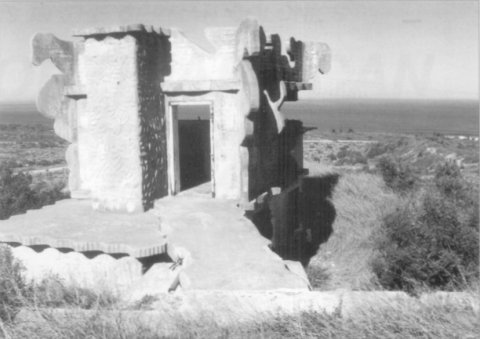
Plate 5: Schoenmakerskop FOP (Photo: R Tomlinson)
The future of the artillery structures on the two Humewood sites is uncertain, both areas being on prime coastal land which has been earmarked for residential or commercial development.
Algoa Battery is located on part of the military enclave still occupied by Group 6, the successor to No 6 Coast Regiment SACM, who have taken considerable interest in, and carried out regular maintenance on, the buildings and guns over the years. The author understands that the SA National Defence Force has a lease on the site until 2005. He has maintained for many years that the battery would make an ideal small military musuem, because of its completeness and its position just behind the popular tourist beaches in Port Elizabeth's 'Golden Mile' and immediately to the newly-opened Boardwalk and Casino complex. In addition to the buildings and guns already described, the surface gun stores, gun pits and underground magazines of all three gun emplacements survive, the latter still retaining their copper-plated doors, ammunition hoists and 'blast-tunnels' around the periphery of each magazine.
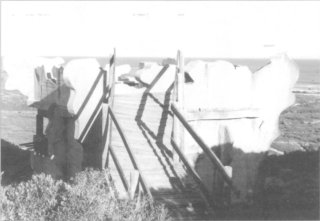
Plate 6: Seahill FOP showing the recent timber ramp
added to facilitate visitor access (Photo: R Tomlinson)
In the last months of 2000, the future of the Brooke's Hill military buildings came to a head with decision by the National Department of Public Works to put the hilltop site up for sale. The author has recommended that the buildings, including a large double-storeyed building dating from later in the war, which seems to have been designed for artillery radar, should be repaired and incorporated into the development scheme.
Fortunately the artillery buildings are now 60 years old, and therefore qualify for protection undee the new Heritage Resources Act. The situation with the FOPs is less crucial. The author was successful in applying to have the Amsterdam Hoek FOP declared a national monument, which occurred in May 1998. The military site at Seahill is safeguarded within the Cape Recife Nature Reserve. The FOP has been repaired, and a timber ramp for access to the flat roof has been provided by the Parks and Recreation Department as a viewpoint feature of its walking trail (Plate 6). The FOP at Skoenmakerskop is more vulnerable to vandals and 'graffiti artists', but does not appear to be under threat from development at present.
The author belives that it is vitally important that the complete set of coastal artillery buildings at Algoa Bay be preserved as South African Heritage.
Bibliography.
Personal correspondence, Mr C E C Brereton-Stiles of Noordhoek, Cape
Town, December 1992 to January 1993.
Commandant C J Nothling (ed), Ultima Ratio Regum - Artillery History of
South Africa, (Military Information Bureau, S A Defence Force, Government
Printer, Pretoria, 1987)
Letter, 9/11/39, Commanding Officer CAB, Cape Town, to DGO, Pretoria.
Letter 19/1/40, DGO to Deputy Director Fortifications (DDF) and Officer
Commanding CAB (for information).
Letter 14/8/48, DDF, Cape Town, to Garrison Engineer, Port Elizabeth.
Letter 9/11/39, Commanding Officer, CAB, Cape Town, to DGO, Pretoria.
Survey Instruction No 1/1940 28/2/40 from Director, Trigsurvey Office,
Mowbray, to Surveyor Mr F Mendes-de Gouvea, Mowbray.
Letter 14/8/40, DDF, Cape Town, to Garrison Engineer, Port Elizabeth.
Letter 19/6/40, Secretary for Defence to General Manager, SA Railways & Harbours,
Johannesburg.
Letter 15/3/48, Commander CAB, Cape Town, to Officer Commanding, Eastern
Province and Border Command, and Officer Commanding, 3/6 Heavy Battery
SAA, Port Elizabeth.
Eastern Province Herald, Port Elizabeth, 23/9/55.
Cdr W M Bisset, 'Blue Gums Fortress Observation Post Simon's Bay Fire
Command 1942-1955' in Militaria, 16 January1986, pp 1-3).
FORTIFICATIONS IN SOUTH AFRICA
Richard Tomlinson in Port Elizabeth has been a member of the UK-based
Fortress Study Group for many years and has recently been
appointed to the Group's International Editorial Board. He has written
-several articles for the FSG's journal, Fort, and newsletter, Casemate,
in an attempt to put South Africa 'on the map' with regard to fortifications.
He would welcome information from members on any
developments connected with fortifications in this country, such as
excavations, restorations, opening of forts to the public, for onward
transmission to the FSG. In each case, the source of such information
-will be credited to the correspondent and a copy of any items published
by FSG will be sent to the correspondent. Richard can be contacted at
51 Main Road, Walmer, Port Elizabeth, 6070.
End of box
Return to Journal Index OR Society's Home page
South African Military History Society / scribe@samilitaryhistory.org